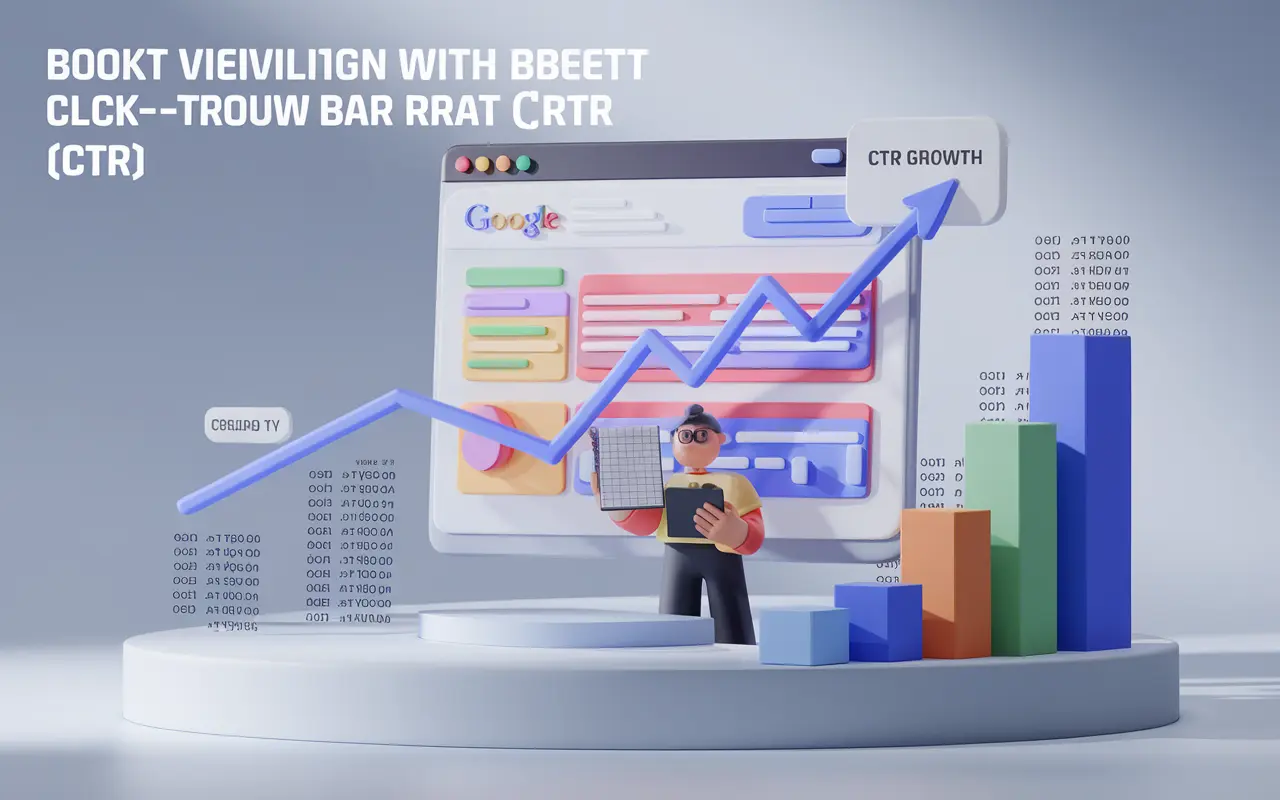What is Click-Through Rate (CTR)?
Click-Through Rate (CTR) is one of the most critical metrics in any digital marketing and SEO strategy. It measures the percentage of users who click on a link after seeing it in search results, ads, websites, or email campaigns. Whether you’re running a Google Ad or optimizing your page for organic SEO, CTR is the litmus test for relevancy and engagement.
Understanding and optimizing Click-Through Rate can directly impact your website’s organic traffic, user behavior metrics, and ultimately, your bottom line. A higher CTR signals to search engines like Google that your content is helpful and relevant, which improves your search rankings and visibility.
Definition
Click-Through Rate (CTR) is the ratio of clicks a link receives to the number of impressions (how many times it’s seen). It’s calculated using the formula:
CTR (%) = (Total Clicks / Total Impressions) x 100
For example, if your webpage appears in search results 1,000 times (impressions) and receives 50 clicks, your CTR would be 5%. CTR is crucial across all channels including SEO, PPC, email marketing, and social media, and provides insight into how compelling your marketing message or meta description is.
Key Takeaway
Click-Through Rate (CTR) is a vital SEO metric indicating how often users click on a website’s link from search results, which directly impacts rankings, engagement, and conversions.
Importance for SEO
CTR plays a major role in SEO effectiveness. Google evaluates how frequently users click on a search result; a higher CTR typically suggests that your title tag and meta description are relevant and engaging. If your page gets many impressions but few clicks, Google may interpret it as unhelpful content, ultimately affecting your rank.
For businesses, improved CTR translates to increased organic traffic without additional ad spend. It increases brand exposure, generates more leads, enhances keyword performance, and contributes to higher conversion rates.
Best Practices
- Craft Enticing Titles: Use action-oriented language and include your focus keyword to increase interest.
- Write Compelling Meta Descriptions: Accurately summarize your content while encouraging clicks using power words and value propositions.
- Use Structured Data: Rich snippets increase visibility by showing ratings, FAQs, etc.
- Target User Intent: Align your content and tags with what your audience is actually searching for.
- A/B Test Headlines: Test multiple headlines to find which one drives more clicks.
- Localize Content: Use location-based keywords for improved CTR in local searches.
- Mobile Optimization: Ensure your listing looks great on mobile devices where a majority of searches happen.
How Click-Through Rate (CTR) Works
CTR functions as a behavioral signal to search engines. Here’s how it works in SEO:
1. Tracking Impressions and Clicks:
Each time your webpage is displayed in search results, it’s recorded as an impression. If a user clicks that listing, it’s registered as a click. Tracking tools like Google Search Console help monitor CTR.
2. CTR and SERP Positioning:
Search engines notice when certain listings receive more clicks, especially at lower positions. This signals relevance and may help those pages rise in rankings over time.
3. Algorithmic Learning:
Google’s ranking algorithm uses machine learning models to evaluate CTR patterns, using them as part of its RankBrain system for evaluating user satisfaction and query relevance.
| Position in SERP | Average CTR (%) |
|---|---|
| 1st | 27.6% |
| 2nd | 15.8% |
| 3rd | 11% |
| 5th | 4.1% |
| 10th | 2.5% |
Case Study: Boosting CTR to Improve Organic Traffic
Problem – Low Click-Through Despite High Rankings
An e-commerce company ranked on the first page of Google for several product-related keywords but had a consistently low CTR of under 3%. Despite visibility, traffic remained stagnant.
Solution – Meta Optimization and A/B Testing
The SEO team rewrote title tags and meta descriptions to align with user intent, included strong CTA phrases, and highlighted unique selling points. A/B testing was done using search console toggling.
Results – CTR Doubled & Traffic Grew
Within four weeks, CTR improved from 2.9% to 6.8%. Organic traffic for targeted pages increased by 57%, and the conversion rate saw a 22% lift due to higher intent visitors.
Common Mistakes to Avoid
- Keyword-Stuffed Titles: Overusing keywords can make your headline unreadable and decrease trust.
- No Value Proposition: Failing to tell the user why they should click results in ignored listings.
- Unaligned Content: If your title/description doesn’t match the page content, bounce rates increase and rankings drop.
- Neglecting Mobile Formatting: Meta titles that truncate poorly on mobile devices lose effectiveness.
- Ignoring Visual Enhancements: Not using schema markup for rich snippets can result in lower CTR compared to competitors.
Related Terms
Related terms:
- Meta Description: A summary that appears under your title tag on search engines, vital for encouraging clicks.
- Title Tag: The clickable headline shown on search engine results pages.
- RankBrain: Google’s AI SEO tool that uses behavior metrics like CTR for ranking decisions.
- Impressions: The number of times your webpage is displayed in results or viewed online.
Conclusion
Click-Through Rate (CTR) is more than a performance metric—it’s a signal to both users and search engines about the relevance and appeal of your content. Mastering CTR strategies improves your organic visibility, lowers cost per acquisition, and boosts site engagement. Businesses must continuously test, optimize, and refine key elements like meta titles and descriptions to remain competitive looking to win in the SERPs. For deeper guidance on improving your CTR and overall SEO—explore our dedicated resources on SEO services.






